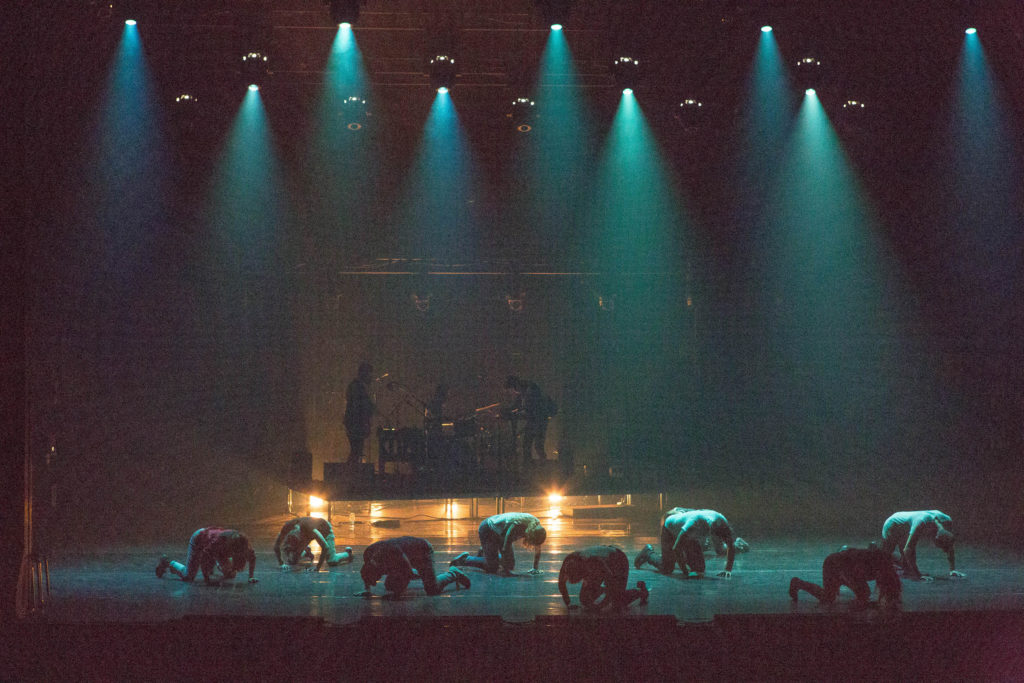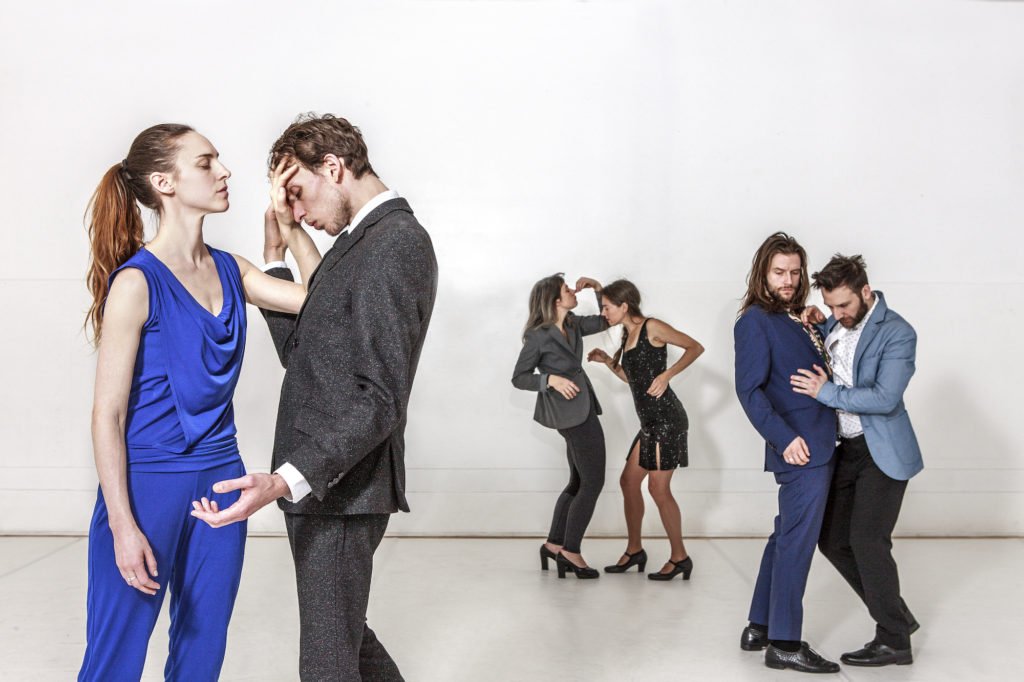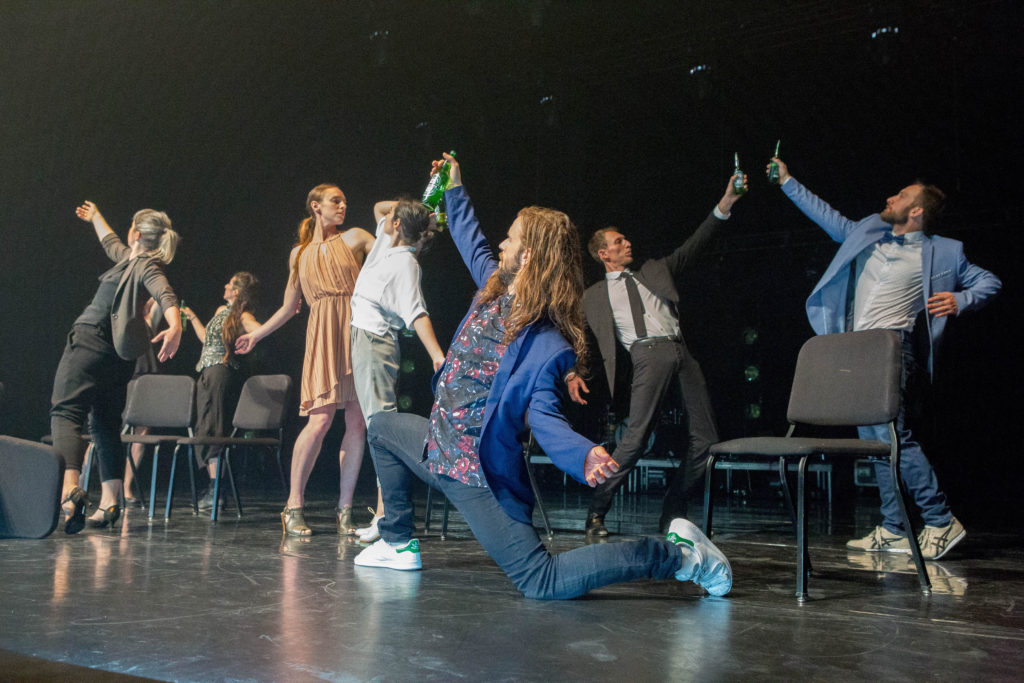
Frédérick Gravel has produced “Some Hope For the Bastards” after a long string of successes. He has been felicitated the world over for concocting a fearless and modern strain of contemporary dance that embodies Montreal’s quirky and witty spirit. As an opener for the 2018 PuSH festival, theatre and dance lovers couldn’t have asked for any better. For an hour and a half, Gravel’s tireless band and spectacular dancers had us eating out of their hands as they toyed vigorously with abstract interpretations of “being an asshole,” hurting people you care about, and growth as a result of your mistakes. With more humour, bravery, and weirdness than you can imagine, Gravel’s production won the audience over and received a full standing ovation.
I’ve been thinking about Vancouver’s arts culture lately, particularly its music, art, literary, and theatre cultures. They exist in pockets and they are definitely not what we are known for anymore. Last weekend at Berlin photographer and doorman of the Berghain, Sven Marquardt’s art opening at the Polygon Gallery, he recounted the humble beginnings of Berlin’s club culture and that it was birthed by the fall of the Berlin Wall, and from the trauma associated with the end of old identities and the search for new ones. Is it then possible for all cities to strategecially cultivate their own culture? When I moved to Vancouver from Alberta in 2009 to become a writer, I was drawn to the city’s live music scene, poetry slams, and a calendar chock full of all kinds of events. Back then our roommates used to be in bands or dancers or writers and poets, surviving on part-time jobs, somewhat happily. There were concerts with $10 covers on any night, meetups galore, weird little art shows, people handing out their chapbooks. Innovators and creatives flourished.
Today sky-high rents have successfully driven out the majority of artists and musicians in the city. The ones who had the means to remain have learned to sanitise their art so they can survive in this high cost of living marred, fast becoming, global metropolis. The weird and wacky have been knocked out of them and the coming generation doesn’t even know they ever existed. Now our roommates are social media managers and ad sales ninjas. The poetry slams are a mere shadow of the raucous riots they used to be. Everyone has up and left. So where does this leave us? In a state of defeated resignation or renewed motivation to remedy the situation?
In such a situation we look to Montreal, a city that hasn’t yet hit its real estate crisis. Young Vancouverites who can speak some French (or not) have made the move for better rent and a relatively stress-less existence. To Montreal, to Nelson, the Island, hell even Nova Scotia. Montreal is, of course, legendary for its reputation in contemporary dance, after Belgium, (incidentally, one of the best shows I’ve ever seen at PuSH was the Belgian Dark Matter). It seems that there is more happening in Montreal and that dance is more accessible there than it is here.

Frédérick Gravel emerges from this progressive and thriving performing arts culture. As a choreographer, dancer, musician, director and singer, his productions blur the lines between many disciplines. His latest work transported me to (what I imagine) his artistic community in Montreal to be, where expression is examined, experimented with, and overall valued. I saw in the plain-clothed dancers, people just like us- people who dress like us, talk like us. There was no “us” and “them”, in fact, there was literally no curtain, no start of show, and no concrete end.
Gravel removed the “performance” out of this production. His intention to do away with stiffness resonated with me as a theatregoer in Vancouver, where stiffness encroaches daily as we get reined in by the unaffordability of the city and lose our artistic playfulness to corporate systems. Formality and stiffness increasingly permeate Vancouver art as it caters to high-end clientele as they become the only ones able to afford it. While in a chicken and egg scenario, the art is no longer made by reckless artists with nothing to lose but by cautious ones with everything to lose.
In Gravel’s opening monologue-ish, he alluded to the bland act of being an adult: going to work at the same time every day, feeding the kids, doing it all for no reward, and doing it because it was the minimum expected. In this casual address, he pretty much gave the audience permission to leave whenever they wanted, warned that the show would be long, and took a charming shot at the establishment. Leave the show quite a number of confused people did, but the vast majority that remained were rewarded many times over. One would guess that Gravel would have taken a few people leaving as a compliment.
This exact attitude is what I am talking about. This unaffected honesty, scoffing at pointless social mores, and just its overall friendliness were what made the show unforgettable.
Is this how they do in Montreal? Or is this just the Frédérick Graval touch?

 Gravel’s choreography takes the contemporary style and plays with, contorts it, subverts it and extends it. Some bits test your patience but it wouldn’t be PuSH if they didn’t. In the beginning, the dancers moved around on the floor with stiff bodies for a good 10 minutes. Maybe this was them shaking off all the pretences expected of them, to enter a fluid, authentic space. Then followed a large sequence comprised entirely of pelvic thrusts that started off comedic but grew into seriousness. This graduated to chest pops and then we were finally into the familiar groove of stylised choreography with patterns and geometry. And when you made it to this point, you felt glad you stayed. Glad that you let yourself see something unusual before getting to the comfortable part. In this buildup, Gravel recreated the process behind choreography and the dance itself. He reminded us that his dancers and musicians are flesh and blood. They need time to warm up before reaching full throttle.They need to get into the mood and don it like a fine fur coat to give it their heartfelt all.
Gravel’s choreography takes the contemporary style and plays with, contorts it, subverts it and extends it. Some bits test your patience but it wouldn’t be PuSH if they didn’t. In the beginning, the dancers moved around on the floor with stiff bodies for a good 10 minutes. Maybe this was them shaking off all the pretences expected of them, to enter a fluid, authentic space. Then followed a large sequence comprised entirely of pelvic thrusts that started off comedic but grew into seriousness. This graduated to chest pops and then we were finally into the familiar groove of stylised choreography with patterns and geometry. And when you made it to this point, you felt glad you stayed. Glad that you let yourself see something unusual before getting to the comfortable part. In this buildup, Gravel recreated the process behind choreography and the dance itself. He reminded us that his dancers and musicians are flesh and blood. They need time to warm up before reaching full throttle.They need to get into the mood and don it like a fine fur coat to give it their heartfelt all.
There are two hypnotic and climactic dances that land at the midway and end points of the show. These use the dancers’ bodies in unusual ways- pirouette twirls, scooping arms, one finger pointed heavenward, hard falls to the ground that just miss the knees, slapping of the arms and shoulders against the ground. In between these are subtler sequences of aggravated couples dancing together, exhibiting trouble in relationships. These moments also suggest that the pelvic thrusts at the beginning were the carnal meet-cute of the couples. The friction gets bigger and bolder and then faster and grander. Here now is the guilt and anger at one’s self for being the aforementioned asshole.
Once exhausted from the self admonishment, and into the second half of the dance, the dancers’ shapes became more introspective- bent heads and necks got closer to the ground. Energy picked up once again as the dancers earned redemption and emerged exhausted and renewed, like phoenixes. Through all this, the live band, in which Gravel played guitar, switched up genres to keep up with the dancers’ shifting energies. It was all original music that flowed from rock to R&B to techno to ballads.
The mastery and stamina of the dancers took the audience’s breath away. The power and strength of the show lay largely in the physical endurance of the dancers and the band members. They were nothing short of powerhouses. Gravel also retained every dancer’s individuality. He let them play to their strengths and their unique body types while still managing to make the piece cohesive.

Gravel’s work reminded me of what art can look like when we approach it with complete honesty and with the simple tools available to us- the breath in our lungs, the muscles in our limbs and cores. You don’t even really need a lot of money if you want to make something authentic. The tragedy is that in Vancouver you cannot simply commit to this mode of almost immersive art making because survival itself is so hard, unless you come from wealth, in which case your stories are overrepresented anyways. Not that we should expect our artists to starve but there is something to say about the need for a simple, monastic existence to be closer to the true meaning of life. To quote Viktor Frankl, “what man actually needs is not a tensionless state but rather the striving and struggling for some goal worthy of him.” Maybe then gentrification is this struggle.
As millionaires move into “cute” neighbourhoods to enjoy culture, they’re essentially killing the source of this culture- the people who create it. The culture might live on in logos of quirky cafes or on open mic nights at dive bars, but without sustenance from its grassroots originators, it will be short lived. Gravel reminded me of what we have lost and are losing everyday- our artists and their invaluable weird and wacky perspectives.
So what are the solutions? More grants for artists? Living spaces for them? Rent control?Funding for the arts that Stephen Harper took away?
Maybe. But for now, we’ll make do with witnessing Gravel’s latest production, filling up the Playhouse, giving his crew a standing ovation, and hoping there were a few dancers in the building who walked out inspired enough to make something breathtaking of their own.
“Some Hope For the Bastards” had a one night run but you can get tickets to all the other amazing PuSH shows here now!
-Prachi Kamble
